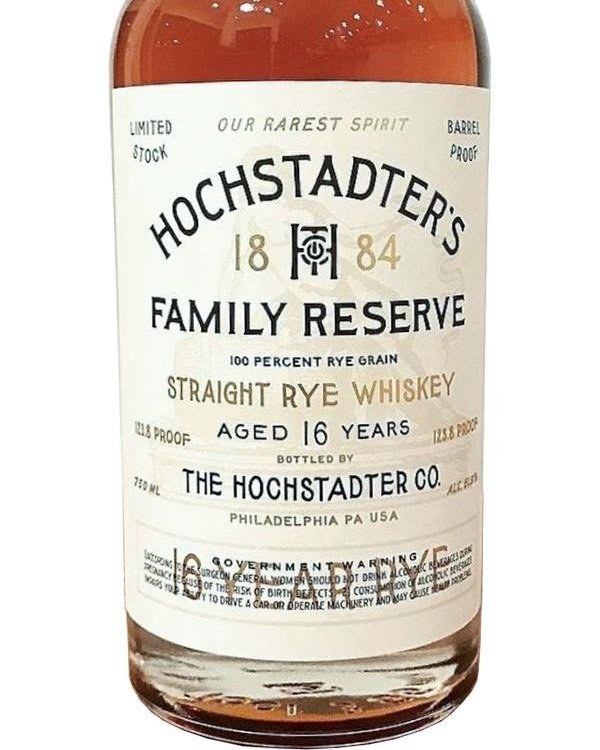Liberty Pole Spirits Pennsylvania Straight Peated Bourbon Whiskey
Liberty Pole Spirits Pennsylvania Straight Peated Bourbon Whiskey Bottle. Image courtesy of Liberty Pole Spirits.
Nestled comfortably in Washington County, Pennsylvania, is Liberty Pole Spirits, also known as Mingo Creek Distillers (for its location near the creek and the Mingo Creek Society from which it gets its name).
Today’s Washington County was once at the western border of the US, just outside of Pittsburgh on the Ohio River. As the nascent United States sought to consolidate and then pay its war debts, Treasury Secretary Alexander Hamilton imposed an excise tax on spirits, namely whiskey. At the time, whiskey (and other distilled spirits) was not a mass-produced product: it was a way for farmers to preserve their unsold grains and other crops in a non-perishable and more easily transported form. Few, if any, had the income to pay debts accrued by the new country, and even fewer had it in the coinage or hard currency requested by excise agents.
And so, a revolution was born. From Liberty Pole Spirits’ website:
“So they gathered together secretly in a meetinghouse near Mingo Creek and vowed not to pay the tax. They were the first men to oppose an act of the new government, and they vowed to stick together. They called themselves the Mingo Creek Society. As a symbol of their unity, they planted Liberty Poles throughout the county.”
Liberty poles go back at least to the assassination of Julius Caesar, after which his killers held long staffs/poles with a Phrygian cap on the top to represent freedom from tyranny. The story is disputed, of course, but the idea of liberty poles have continued over the ensuing millennia. They were visual representations of a simple idea: out-of-touch dictators, tyrants, or just disliked government figures, were not above reproach.
Though the Whiskey Rebellion was ultimately put down by Washington and a large cadre of troops, one can’t deny it was successful. The tax was repealed by President Jefferson shortly into his term, and another wouldn’t follow for decades. The county where the Rebellion was born would be renamed Washington County, and liberty poles remained in cemeteries, museums, and public areas as historic monuments to the fight.
Two centuries later, Liberty Pole Spirits came on the scene to distill how they did in the old days - with updated safety, of course. Their bourbons, ryes, and corn whiskies are double pot distilled using locally grown grain whenever possible.
All that said…
I’ll ask the same question I had about Kings County’s peated bourbon - why? Not that I don’t enjoy experimentation in whiskey, but I can’t find any evidence for the use of peat in American whiskies. Unlike Scotland and parts of Ireland, there were plenty of trees and other biofuels available, meaning peat wasn’t needed for heat and therefore wasn’t used for whiskey-making.
As with Kings County, the results of the experiment are promising - this is a delicious product. If it’s for experimentation sake, so be it, I just like knowing the why and don’t like when the reason - however interesting or successfully executed - doesn’t make sense to me. In Liberty Pole’s case, it’s in homage to the Scots-Irish heritage the western Pennsylvanians brought with them across the pond. Sometimes, heritage is a good enough reason. Liberty Pole and Mingo Creek have that heritage - and that’s good enough for me.
Liberty Pole Spirits Pennsylvania Straight Peated Bourbon Whiskey: Specs
Classification: Pennsylvania Straight Bourbon Whiskey
Origin: Liberty Pole Spirits
Mashbill: 59% Bloody Butcher Corn, 11% Six-Row Distillers Malt, and 30% Heavily Peated Barley
Proof: 92 (46% ABV)
Age: 2+ Years Old
Location: Pennsylvania
Liberty Pole Spirits Pennsylvania Straight Peated Bourbon Whiskey Price: $52
Liberty Pole Spirits Pennsylvania Straight Peated Bourbon Whiskey: Tasting Notes
Eye: Light maple syrup. Medium bleeding rims, slow thin legs.
Nose: Earthy, and cognac-like. There’s a deep underlying fruitiness, a bit of pepper on the nose followed by grape must. Baked goods with vanilla. Peat is preeminent, but not predominant. Grain-forward bourbon holds its own underneath.
Palate: Bourbon sweetness, particularly grain-forward without any fermentation, plenty of oak spice, the peat going more for smoke than anything vegetal. Dark, but not unsweetened chocolate. Mouthfeel is piquant, adding freshly fallen leaves and an earthy smoke. The grape must and cognac feeling continues, mildly coating and drying.
Finish: Medium-length, profile remains consistent, smoke with just a touch of leafy vegetation.
Overall: I quite like this. The heritage - brought through imported peated barley - is palpable and gives this a uniquely “right” feeling. Call it spot-on with intentionality. In the dearth of peated bourbons, this is the one to follow.
Final Rating: 6.8
10 | Insurpassable | Nothing Else Comes Close
9 | Incredible | Extraordinary
8 | Excellent | Exceptional
7 | Great | Well above average
6 | Very Good | Better than average
5 | Good | Good, solid, ordinary
4 | Has promise but needs work
1-3 | Let’s have a conversation







